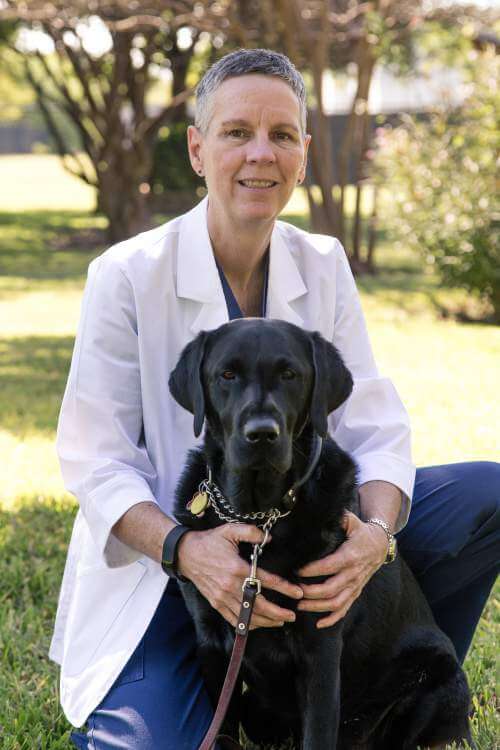by: Dr. Sharon Theisen, DVM, DACVIM

Pituitary dependent Cushing’s disease is something that we have to deal with on a routine basis. It is most common in small breed dogs and is marked by an increase in thirst, urination, panting, along with a ravenous appetite. It is usually diagnosed with a low dose dexamethasone suppression test where the 8 hour cortisol level is generally greater than 1.5 ug/dl. An ultrasound can help confirm that it is pituitary dependent by finding that both adrenal glands are enlarged and normal in shape. Once the diagnosis is confirmed, the decision about how to treat must be addressed. The most common treatment utilized currently is Vetoryl. The usual starting dose is 1 mg/kg twice a day, but there are many dogs that will require incredibly high doses to control the clinical signs. This is frustrating for the owners and can become very expensive over time.
If you are seeing a dog that is not responding to Vetoryl, you can consider going to a medication that was used extensively in the past- Lysodren (mitotane). This medication works by destroying the adrenal gland with preferential destruction of the zona fasciculata (where cortisol is made) but can destroy the zona glomerulosa (where mineralocorticoids are made) as well. It is a highly effective, and often more predictable, medication to decrease cortisol production and control the clinical signs of Cushing’s disease than Vetoryl. It can be obtained from on-line pharmacies such as Chewy.com or Allivet.com.
When used, I will start this medication on a Saturday morning and give 25 mg/kg (rounded to the nearest 125 mg- the tablet is 500 mg) twice a day. The owner is instructed to put the meal down and if the dog eats the meal with it’s normal vigor, they give the dose of the Lysodren. The first time the owner puts the meal down and the patient does not eagerly eat the meal, they do not give any more Lysodren until an ACTH stimulation test can be performed. I never go more than 7 days without doing an ACTH stim, so by the following Friday, I will always check the ACTH stim. There is no timing requirement for this test with Lysodren, unlike Vetoryl. The goal is to have the pre and post cortisol in the 1-5 ug/dl range. Once this is achieved the Lysodren is decreased to 25 mg/kg two three times a week in order to maintain the cortisol levels in the desired range. As long as the patient is eating well, it is unlikely that they will become an Addisonian. The worse case scenario is that they do become an Addisonian, and quite honestly, these patients are easier to manage long-term. Lysodren is not a scary drug as long as we make sure that the client only gives it if the dog is eating well. Think about it for those dogs that are not responding to Vetoryl.

